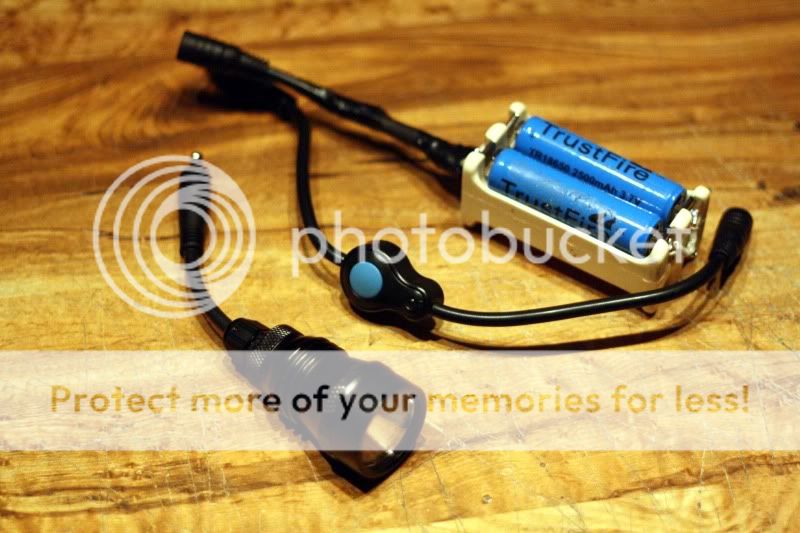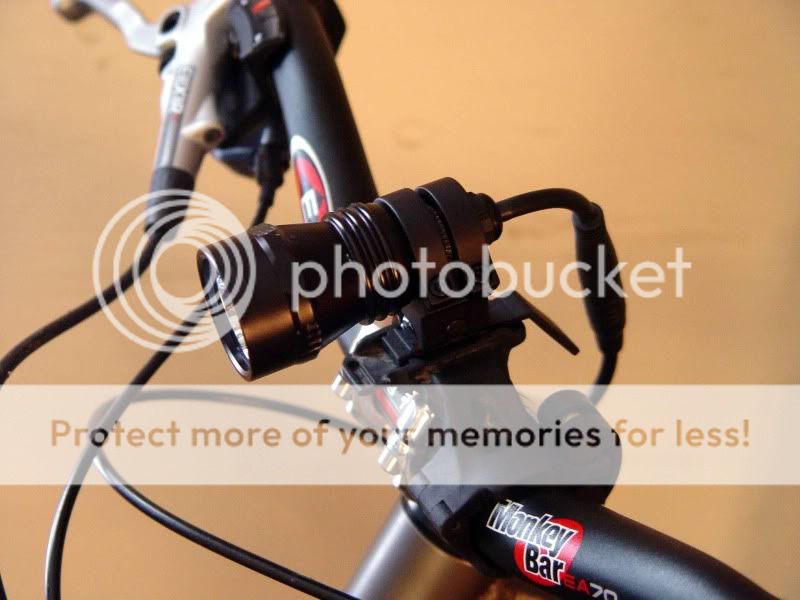crimsonhalo
Newly Enlightened
- Joined
- Apr 29, 2010
- Messages
- 10
OK, I'm new here. The man at my neighbourhood bike shop wanted $350 for a a 200 lumen headlight with Li-ion battery, and the construction frankly sucked not to mention the dust in our climate would kill it fairly quick. I've made lights for my bike and trailer in the past, usually using 10,000mcd white and red LEDs bought on the cheap from eBay, but what I want to do now is design a respectable headlamp for the bike itself. I started a 50-LED rectangular array of 5mm LEDs tonight, but I didn't feel satisfied ...
I was wondering if anyone can offer insights on the current crop of LEDs out there, for a design I'm considering for this headlamp. Basically, it will end up as the AK47 of headlights, not cutting edge perhaps, but rugged and versatile and reliable enough that it can be depended on in a variety of terrains and climates. I intend to open-source the design and publish via WWW for other cyclists to build and improve on the design in turn.
Goals:
- LED headlight
- $50 parts budget. Scary, but recession friendly.
- Road and trail capable
- Wet and sandy/dusty terrain tolerances
- Illumination: not sure about numbers but must cover a sufficient area to ride safely at night
- Passive components if possible, otherwise minimal circuitry and rugged
- AA size NiMH or NiCd cells, since this cell is the AK47 round of flashlights IMHO and using an even number of them in any circuit is good (I can't tell you how irritating it is to keep track of rechargeables on a 3xAAA lamp, grrrrr)
- Runtime: 2 hrs minimum as target
- Able to take apart using a swiss army knife, if compartments or covers
- Build time of roughly an afternoon
Basically, the circuit is what has me stumped because I've been out of the loop so long, and am only getting back into electronics recently, so I have hardly any clue what may be out there. From the look of eBay, many new generations of products have come out these past few years. I welcome ideas and suggestions on what lamp might be best for a bike headlight. The simpler the better. Heatsinks are an option if needed but lathes are right out.
I have stuff -- tools, NIMH and NICD batteries, battery holders, various electronics bits, and some 2x4 inch aluminum heat sinks salvaged from a PC monitor -- on hand as I speak, and will be looking to test stuff out as the design moves along.
I was also very inspired by this group's 6000 lumen build with what looks like a 9.6 volt battery and a large aluminum block heatsink. Something like that design with 400 degree clear silicone as the shock buffer, was along the lines of my first thoughts.
Also, eBay: I know from experience some things there are great and others are crap, though I want to poll a wider audience here. What have you bought there that's satisfying in terms of LED flashlight tech? Any good "parts flashlights"? Any ready-to-go devices that you simply wire up to a battery? Any circuit dealers that this group prefers?
Many thanks for your time and interest.
~ Brian
www.crimsonhalo.com
I was wondering if anyone can offer insights on the current crop of LEDs out there, for a design I'm considering for this headlamp. Basically, it will end up as the AK47 of headlights, not cutting edge perhaps, but rugged and versatile and reliable enough that it can be depended on in a variety of terrains and climates. I intend to open-source the design and publish via WWW for other cyclists to build and improve on the design in turn.
Goals:
- LED headlight
- $50 parts budget. Scary, but recession friendly.
- Road and trail capable
- Wet and sandy/dusty terrain tolerances
- Illumination: not sure about numbers but must cover a sufficient area to ride safely at night
- Passive components if possible, otherwise minimal circuitry and rugged
- AA size NiMH or NiCd cells, since this cell is the AK47 round of flashlights IMHO and using an even number of them in any circuit is good (I can't tell you how irritating it is to keep track of rechargeables on a 3xAAA lamp, grrrrr)
- Runtime: 2 hrs minimum as target
- Able to take apart using a swiss army knife, if compartments or covers
- Build time of roughly an afternoon
Basically, the circuit is what has me stumped because I've been out of the loop so long, and am only getting back into electronics recently, so I have hardly any clue what may be out there. From the look of eBay, many new generations of products have come out these past few years. I welcome ideas and suggestions on what lamp might be best for a bike headlight. The simpler the better. Heatsinks are an option if needed but lathes are right out.
I have stuff -- tools, NIMH and NICD batteries, battery holders, various electronics bits, and some 2x4 inch aluminum heat sinks salvaged from a PC monitor -- on hand as I speak, and will be looking to test stuff out as the design moves along.
I was also very inspired by this group's 6000 lumen build with what looks like a 9.6 volt battery and a large aluminum block heatsink. Something like that design with 400 degree clear silicone as the shock buffer, was along the lines of my first thoughts.
Also, eBay: I know from experience some things there are great and others are crap, though I want to poll a wider audience here. What have you bought there that's satisfying in terms of LED flashlight tech? Any good "parts flashlights"? Any ready-to-go devices that you simply wire up to a battery? Any circuit dealers that this group prefers?
Many thanks for your time and interest.
~ Brian
www.crimsonhalo.com



